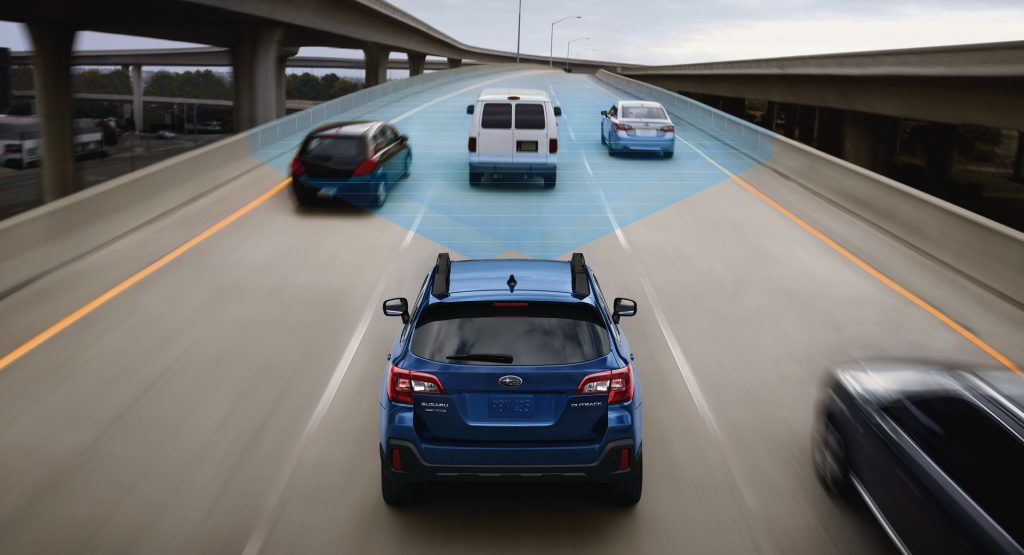Subaru has teamed up with tech company Xilinx in order to upgrade its EyeSight safety system. Once ready, the system will be rolled out in Japanese market models, initially.
EyeSight will use Xilinx’s UltraScale multiprocessor system-on-chip setup, providing the power needed to process its stereo images into 3D “point clouds” with “ultra low latency and functional safety,” said Xilinx exec Willard Tu.
“That’s really needed so that the EyeSight system can accurately understand and react to dynamic driving situations,” he added.
Read Also: 2021 Subaru Legacy And Outback Roll Out With A Few New Features, Revised Pricing
Xilinx also works with the likes of Daimler, Continental, Magna, Veoneer and Pony.ai, as per Autonews.
Subaru’s EyeSight system features two outward-facing cameras, placed on top of the windshield just above the rearview mirror. Currently, the system is able to scan the road ahead looking for obstacles, as well as other vehicles and pedestrians.
In the United States, EyeSight offers adaptive cruise control, pre-collision braking, pre-collision throttle management, lane-departure and sway warning, lane-departure prevention and lead vehicle start – the latter tells you if the vehicle that’s stopped ahead has resumed moving.
Its most important component of course is the stereo camera, which going forward will become even better, according to Eiji Shibata, the carmaker’s GM of automated driving and advanced safety.
“This is where the Xilinx feature comes in,” he said. “That allowed to us roughly double the field of view.”
The first model to benefit from the upgrade will be the Japanese market Subaru Levorg, which will boast active lane-change assist, auto deceleration and hands-off driving in congested traffic – all optional extras.
Subaru has also updated the system’s driver-monitoring capabilities, in order for it to better deal with situations such as driver distraction, unintentional acceleration and loss of consciousness – another optional feature.
According to Shibata, these new functions were developed for Japanese roads and driving conditions. However, the U.S. is targeted too.
“We do have a schedule internally, and we are developing these products for the U.S. market,” added Shibata. “I believe that in the near future, we can bring that to the U.S. market, as well. However, not all these functions can be brought as they are to the U.S. roads. We want to make sure that we develop these functions specifically for the U.S. road situation, as well, and then bring them to the U.S. market as they become ready.”
“The new stereo camera will be brought to the U.S. market very quickly, but each and every function, which needs the appropriate software development, will be introduced as they become ready one at time, or few at a time, for the U.S. market.”








